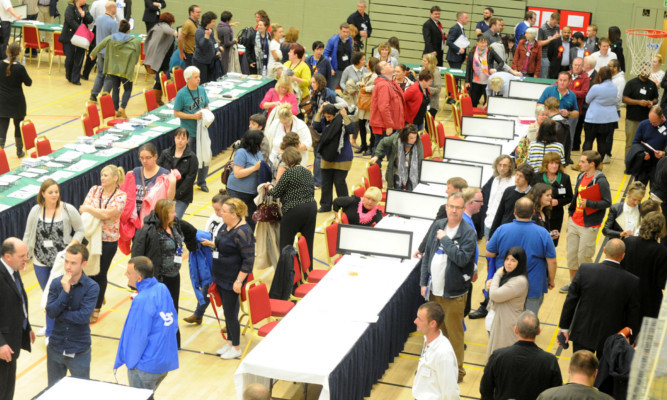The cost of staging last year’s Scottish independence referendum amounted to just over £15.8 million, it has been revealed.
Deputy First Minister John Swinney confirmed the Scottish Government’s final bill for running the September 18 poll in the answer to a parliamentary question.
The total of £15.841 million includes almost £10.9 million which was spent on providing counting officers across Scotland to tally up the votes in each council area.
The Chief Counting Officer’s costs for administering the ballot amount to just under £510,000, mainly reflecting the expenses associated with holding the “international event to declare the referendum result” at Ingliston outside Edinburgh.
The cost is £2.1 million more than had been indicated in financial documents ahead of the vote.
In his answer, Mr Swinney said: “This additional expenditure was due to the very high turnout at the referendum.
“In anticipation of a high turnout, the Chief Counting Officer provided guidance to counting officers on issues such as printing additional ballot papers, to ensure that replacement ballot papers were available to cover for any damaged or misprinted ballot papers, and limiting the number of electors attending individual polling stations, to avoid queues.
“In addition, additional staff were employed at count centres in order to ensure a prompt result. These, and other similar sensible contingency measures, added to counting officers’ costs but ensured that the poll ran smoothly on the day.
“The independence referendum was a triumph for democracy and participation, with the highest turnout of any UK ballot for over a century.
“That huge and unprecedented modern turnout of almost 85% saw more than 3.6 million people across Scotland cast their votes on the nation’s future.
“The referendum also extended the right to vote to over 100,000 16 and 17-year-olds and engaged many older people to vote for the first time in their lives.”
He added: “While the Scottish Government anticipated a very high turnout, potentially of more than 80%, these final costs reflect the significant additional work done by the Chief Counting Officer, counting officers and electoral registration officers to make sure as many people as possible registered to vote, the ballot ran smoothly and a result was declared as quickly as possible.”
